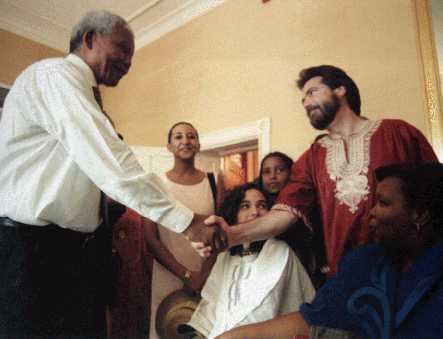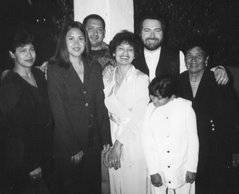During the entire period of slavery, from 1652 until 1834, around 63 000 new slaves were brought to the Cape. Of these 51,5% were from Africa and its islands of Zanzibar, Madagascar and the Mascarenes. A further 26% were from India-Bengal-Sri Lanka. Another 21% were from the islands of the Indonesian Archipelago. The rest were from an array of countries stretching from Persia to Thailand, Japan and China. While much of this slave trade was conducted in the Indian Ocean arena, in the early years the first slaves were taken in West Africa, mainly from Guinea and Angola. In the latter years of slavery other West Africans were so-called 'prize negroes' seized by the British from slavers on the high seas. The majority of African slaves were from Mozambique brought to the Cape in large numbers in the early 1700s, late 1700s and early 1800s. Other Africans were taken from the mainland first to Madagascar and then to the Cape. Others were from Mombassa. Indians were from Goa, down the Coast of Coromandel right through to the Bengal as well as from Sri Lanka. Those from the Archipelago came from Batavia, Java, Timor, Sumatra, Celebes, Malaccas, Bougies, Bouton, Ternate, Bali, Trankebar, Tidore, Ambonya. The language of the slave-ships was Portuguese-Malayu and from this derived the distorted term 'Cape-Malay' which often gave the impression that slaves were from Malaysia. Under the Apartheid system this term, popularised by the ideologue ID du Plessis, was formally adopted as an ethnic sub-category by the state, as a label for many 'Coloured' people holding the Muslim faith.
There is also another whole story (for another future blog) on indigenous South Africans being captured and used as slaves in South Africa and also in a few cases being sold through Mozambique and from the South African coast to slaver ships.
Saturday, September 09, 2006
Slaves brought to South Africa?
To many abroad it seems somewhat peculiar when we talk of slaves being brought to South Africa. Many South Africans are also largely ignorant of this aspect of our history and heritage that dominated almost two centuries of colonial life. Those South Africans, even amongst some of the most learned, who do know something about slavery in the Cape have also often got caught up in a web of skewed information about this era due to ideological manipulation of history under the Apartheid system. Thus one will often find the word slaves prefixed as ‘Malay’ slaves even although there were hardly any slaves taken from what we today know as Malaysia and only just over 21% of all Cape slaves originated in the many islands and territories of the Indonesian Archipelago. There is much mythology to wade through in coming to a reasonably good understanding of slavery and Creolisation in Cape Town and South Africa. These pages are dedicated to telling this story so as to give a better understanding of the history and heritage of those who are called ‘Coloured’ today and to explore the hidden ties that bind so many across ethnic divisions in South Africa.
Subscribe to:
Comments (Atom)

